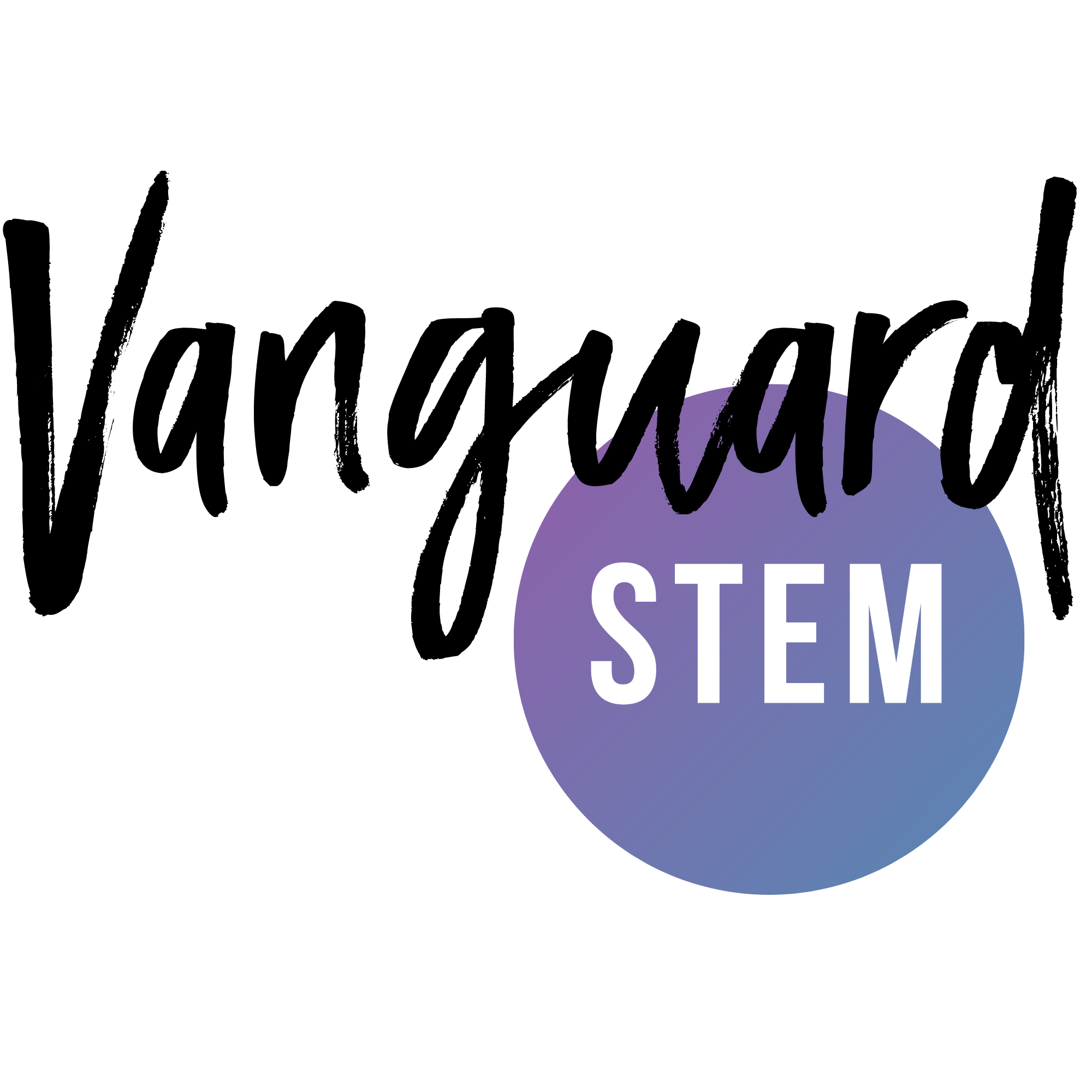Sharks aren’t the only thing this queen has conquered — a master of marine biology, our #WCWinSTEM is creating the necessary waves to diversify waters and make waves of change.
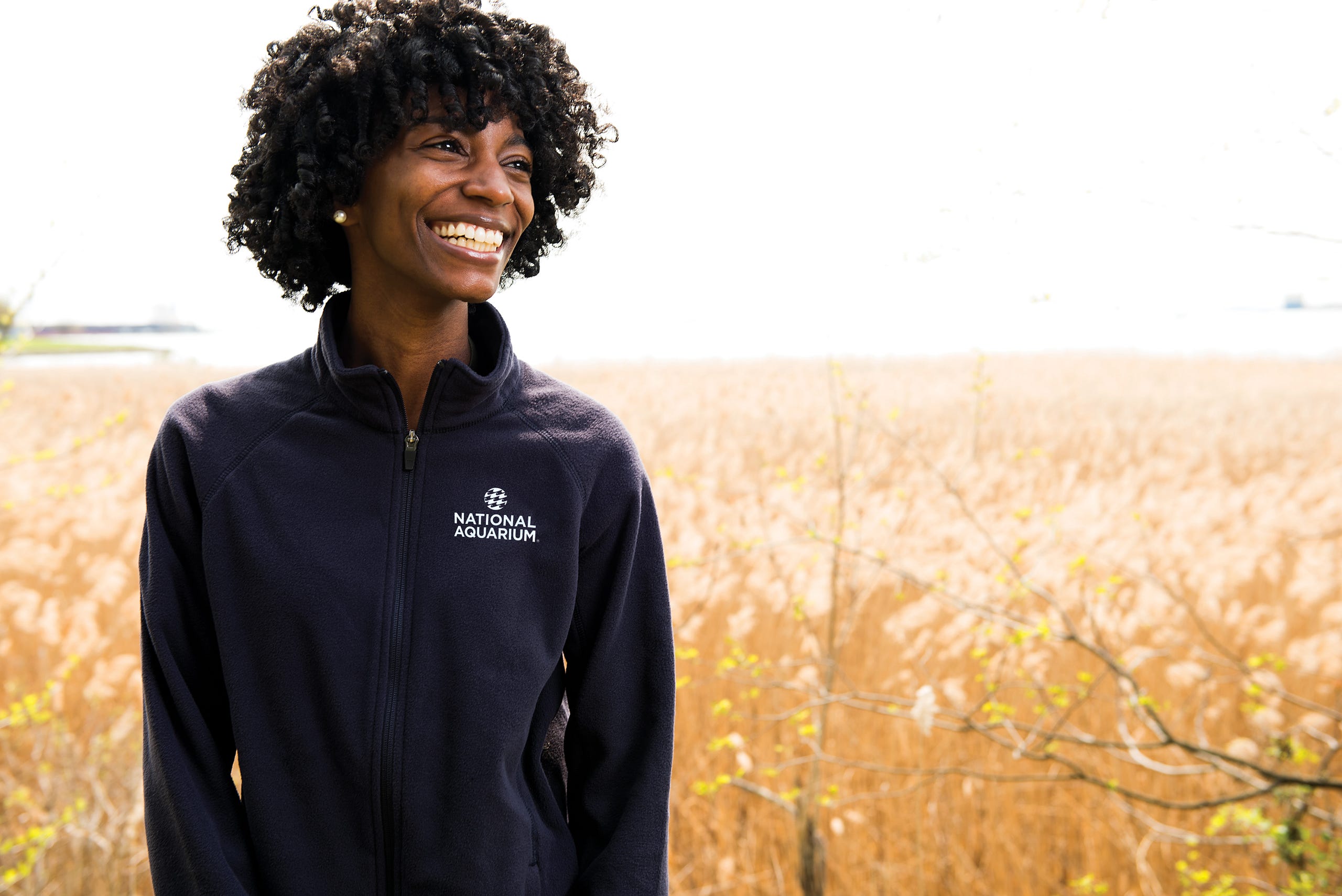
Responses may be edited for clarity and brevity.
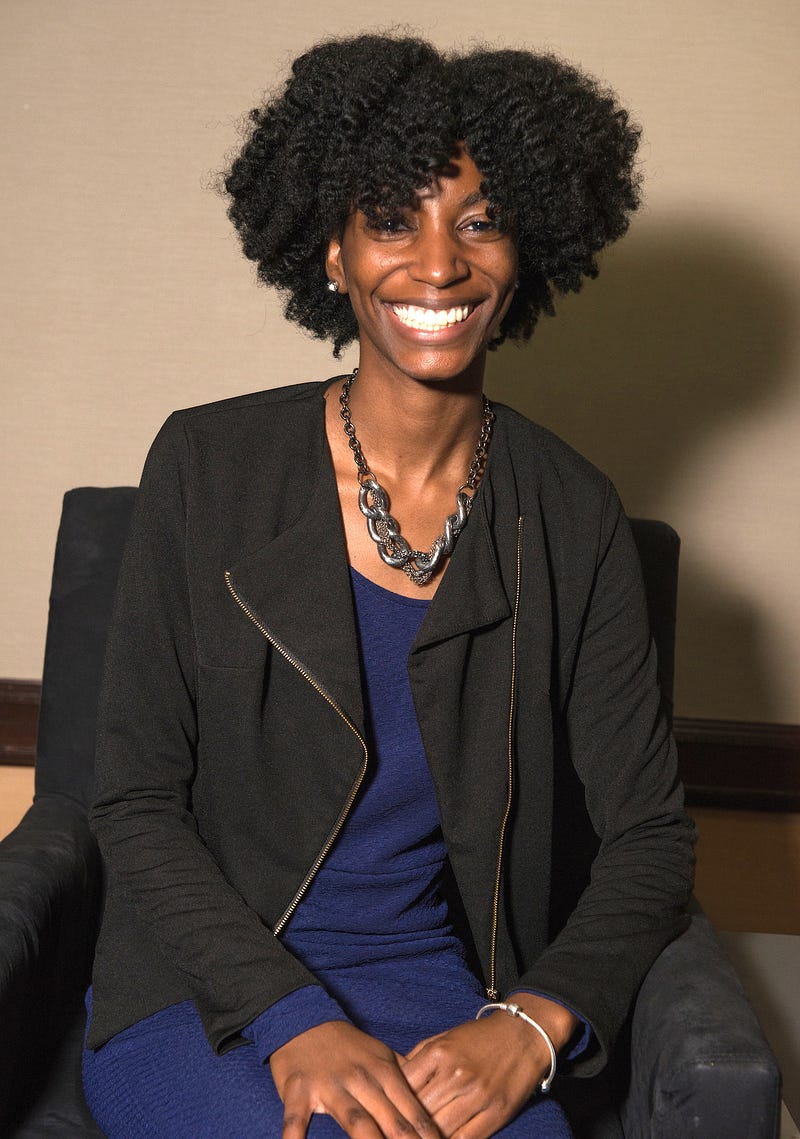
Where did you go to school?
- M.S. Natural Resources, Delaware State University, Dover, DE
- B.S. Marine and Environmental Science, Hampton University, Hampton, VA
What do you do right now?
I am formally trained as a marine biologist, but work in the educational realm as the Urban Education Coordinator at the National Aquarium in Baltimore.
In this role, I oversee a project that is funded through multiple grants from the Chesapeake Bay Trust, the National Oceanic and Atmospheric Administration (NOAA) Bay Watershed Education and Training program and Towson University. The program aims to provide every Baltimore City middle school student, specifically those in the sixth grade, with a meaningful educational experience focused on the Chesapeake Bay and Baltimore’s Inner Harbor. I train all of the teachers and interns who participate, providing them with professional development and ongoing support to ensure they are prepared to teach the lessons.
Aside from my position at the National Aquarium, I am a recruiter for NOAA’s undergraduate scholarship programs and fellowships. I also host the National Ocean Service’s educational video series Ocean Today, Every Full Moon. Ocean Today, Every Full Moon is designed to be used by informal and formal educators, and the general public, to share the many fascinating aspects of the ocean. Collections are released each month (on the full moon) and show themes have ranged from “Endangered Oceans” and “Animals of the Ice” to “The Remarkable Horseshoe Crab” and “Maritime Archaeology.”
I was asked by the producer of the show, Kurt Mann — whom I admire so much because he helped me to develop tremendously as a science communicator over the last year and a half — to be interviewed for their Career Spotlight feature. After the interview, my bosses at the time —Christos Michalopoulos and Carrie McDougall — informed me that Kurt wanted me to be the host of a new series they were working on for educators. I was caught off-guard and, frankly, confused because I had no experience with on-camera work, but I accepted. Since then, Kurt and Jesse (the editor) have pushed me to reach new levels and their continued support has been invaluable.
I have to shout out Christos and Carrie who gave me the time to pursue this science communication venture. They opened this door and I am forever grateful to them for believing in me.
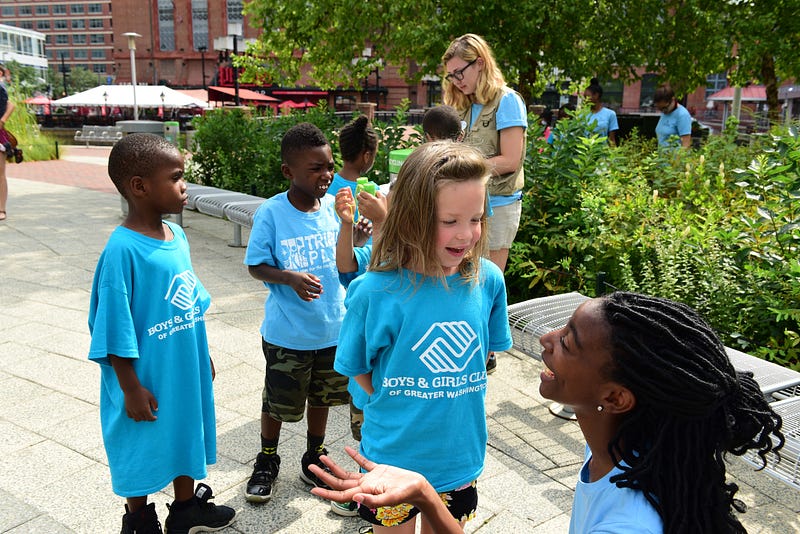
What made you choose your STEM discipline in the first place?
I am from Baltimore City, specifically Cherry Hill. I grew up not having much physical connection to the environment, or a body of water, even though the Patapsco River (and therefore, the Chesapeake Bay) was in my backyard. However, I was interested in nature and watched television programs highlighting animals, fish and ecosystems; this helped my curiosity develop and grow.
The summer after I completed the eighth grade, I joined the Summer Student Volunteer Program at the National Aquarium. As a high school volunteer at the National Aquarium (where I am now employed full-time), I served as an exhibit guide and was tasked with the responsibility of knowing information about all of the exhibits at the aquarium.
I remember being stationed in our Shark Alley and holding a Sawfish rostrum — the shark’s nose projection which is used to locate, stun and kill prey — and thinking, “This is the coolest thing I have ever seen in my life.”
That’s how I felt about everything in the aquarium — it all was so captivating. I was addicted to learning it all. But the thing that made me commit to educating folks was realizing how many people were unaware that we have an overwhelming amount of environmental biodiversity in cities like Baltimore.
More than ever, I wanted people from my hometown — especially Black folks — to know you do not have to travel to see nature. There is beauty here in our home and we should embrace it the same way we marvel at wildlife in exotic locations.
I did not want under-awareness to be why someone did not pursue a career in this field. Just because people of color do not commonly work in this field doesn’t mean we can’t or that it’s not for us. I am here to say quite the opposite. I am working to increase environmental literacy for all, and more specifically, to increase people of color’s exposure to it.
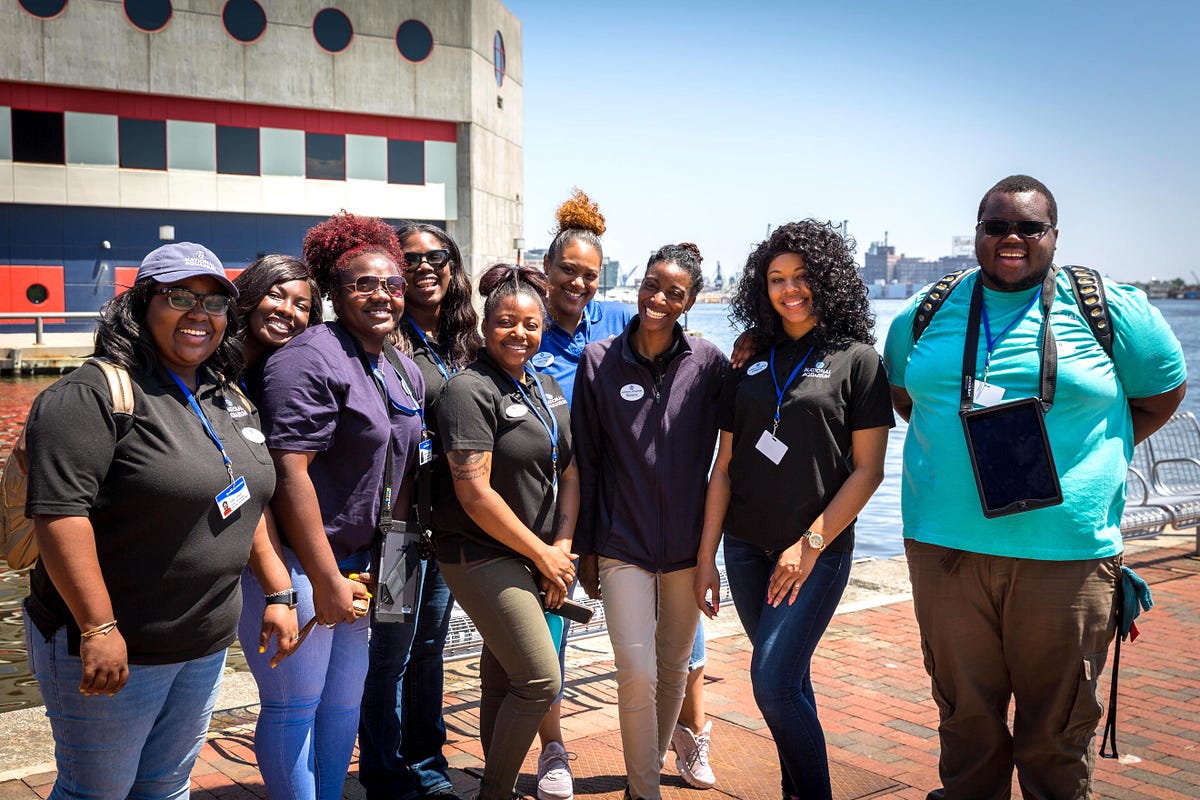
Tell us about some experiences that shaped your STEM path.
Throughout my undergraduate and graduate training I completed a number of intern- and fellowships that shaped my journey.
My first internship was at the Institute of Marine and Environmental Technology in Baltimore. I worked in the algae culture lab to produce algae for the aquaculture lab and ran a study to explore which species of algae grows more efficiently.
I also received the NOAA Educational Partnership Program (EPP) Undergraduate Scholarship and completed two internships at NOAA facilities. In my first internship with the program, I worked in the National Marine Fisheries Service Protected Resources Division. [While there], one of my projects included the development of a protocol for administering pesticides to an area endangered species inhabited. This was my first glance at life in the policy world surrounding marine science.
For my second internship under the EPP program, I went to the Virginia Institute of Marine Science Eastern Shore Laboratory where my primary project was to observe blue crabs in conditions where there is little to no oxygen. We found that the crabs shut down their metabolic rates and enter a dormant state that requires less oxygen enabling them to thrive in these kinds of conditions. These findings were crucial given that the Chesapeake Bay experiences harmful algal blooms and extensive pollution, which ultimately results in reduced levels of oxygen in the water.
When I had time between my trials, I assisted with another study conducted by Drs. Richard Brill and Peter Bushnell. They explored whether sharks would repel a hook that had a magnet attached to it. For background, sharks can sense magnetic fields with their ampullae of lorenzini, a group of specialized sensing organs located just below the surface of their skin. Sharks are commonly incidentally captured as bycatch in recreational fishing, and we wanted to understand if the use of magnets could potentially reduce its occurrence. The study showed that the magnet did have a repulsive effect, but more work needs to be done to determine how different species and ages of sharks would react to the magnets, as well as if different reactions would occur with other magnetic charges.
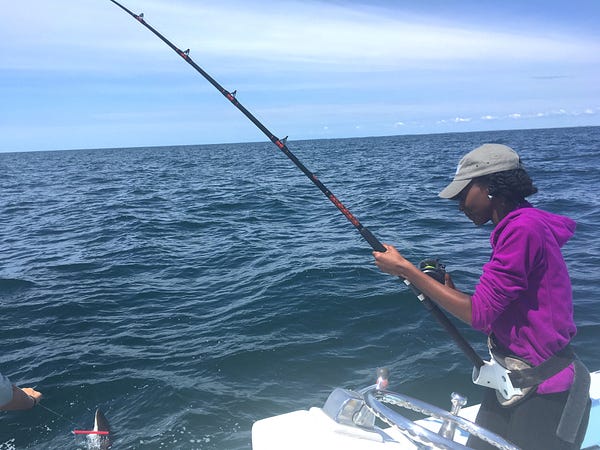
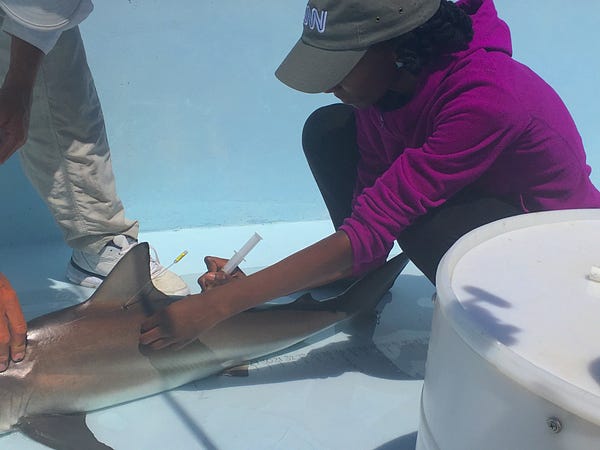
Although this project was not my main focus, it sparked my interest in sharks. I remember the first day I went on the boat to shark fish with the team using just a handline and then later in the summer, we caught Sand Tiger sharks during long-line sampling. It’s ironic because that study aimed to reduce the harmful interactions between humans and sharks, and that is exactly what my thesis project centered in graduate school. I’m not sure if I ever made this connection until just now. It goes to show:
You’re never in a place without reason and even the smallest task could lead to your bigger dreams being fulfilled.
During my undergraduate and graduate work, I participated in many outreach programs and gained great experience in education. As part of the Marine Science Club at Hampton University during undergrad, we organized two Teen Environmental Conferences aimed at exposing youth to marine science, conservation and environmental careers. It was a lot of work because the club totaled about five members and was nestled in a small department, but we wanted to reach as many students as possible. The first year we partnered with the Virginia Aquarium and Marine Science Center, but it was so popular we had to move to a larger venue our second year. That was reassuring for me to know that this was not just something we thought was a good idea, but that it was actually helpful for young people.
In 2016, I was part of the Sea Grant John A. Knauss Fellowship class and spent a year in the NOAA Office of Education working on a few different projects, including participating in the NOAA’s Diversity and Professional Advancement Working Group and helping with recruitment to NOAA’s EPP program, given that I was a recipient of the scholarship during undergrad.
What’s one piece of advice you wish you had when you started your STEM journey?
This is broad, but for me it was crucial for graduate school:
Know your value and do not let anyone take advantage of your time or knowledge.
My graduate experience was one of many trials. I would question my own intelligence and wonder if I was fit for this field. [Overall] I enjoyed graduate school and finished with many skills that made me attractive as a researcher, but [during my time there] I struggled because I did not feel adequately supported. The culture of graduate school in this field can be very taxing and mentally unhealthy if you are not given the proper support. Your success largely depends on your advisors to approve things in a timely manner and offer guidance for your research, but if they are not attentive, you are left to navigate things alone. One thing I would advise all students entering graduate school to do is to ask these questions of the programs and advisors they’re considering: How long does it take for a student to graduate? Can I talk to other students who are currently in labs? What is your turnaround time for edits and feedback?
I loved research, and studying sharks was an amazing experience; it’s one I very much miss. However, I believe it’s my calling to use my background as a tool to bring other young people, especially people of color, to this field — or simply to help them come into an awareness of it.
It took me a long time to understand why graduate school was so frustrating for me, but I am so thankful that it helped me grow as a scientist and as an individual.
Do you have any woman of color in STEM sheros? Who and why?
Vernice Miller-Travis captivates me every time she speaks! She is an environmental justice activist, and I learn so much from her long history of work. She is a pioneer and reminds me that not only can I make it through even when it seems impossible, but also it’s important for me to advocate for myself.
I also admire Candace Osunsade. Although she is not technically in a STEM field, she fights for people of color to have a place in them. She creates avenues for folks and works diligently to increase diversity in these spaces.
I also am so blessed to have other young women of color who I’ve studied alongside and who I consider to mentors: Dr. Ayeisha Brinson, Dr. Jessica Cooper, Shadaesha Green, Andrea van Wyk, Courtney McGeachy and Katelyn Williams all do outstanding work in STEM, and I am proud to have them as influences in my life.
Last but certainly not least, my mother, Stacy Johnson, is a nurse and has always been supportive of my dreams. She demonstrates compassion while still being objective. She constantly builds new skill sets to stay sharp and maintain her competitiveness, and she taught me to never be satisfied with average — to keep perfecting my craft.
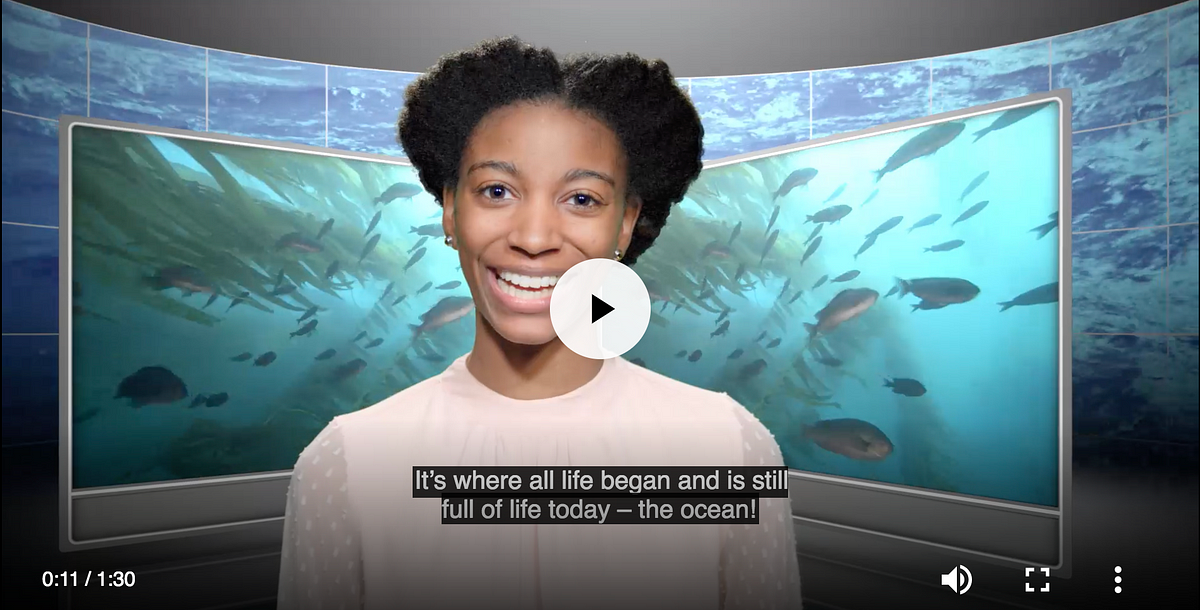
What else are you passionate about?
I enjoy spending time with my family, especially my two younger sisters. One of my sisters, Synai, has some developmental delays. Watching our youngest sister, Sydney protect and care for Synai is a prime example of how important it is to help others. Their presence in my life has contributed to my devotion to mentoring in my church and beyond.
I also love Marvel movies — really any sort of action or super hero film. My other hobbies include traveling, attending concerts and music festivals, and cooking.
Why do you think it’s important to highlight women of color in STEM?
One experience in particular showed me the importance of having women of color represented and highlighted in STEM…
As a Knauss Fellow, I was featured as a shark biologist as part of their Expert Is In program, during which a scientist is stationed within the Smithsonian of Natural History for a period of time to discuss a particular topic. I was in the Sant Ocean Hall with a cart of shark artifacts and a labeled photo of me on a boat next to a Sand Tiger shark I had caught while sampling.
A group of African-American students and their chaperones came into the hall and to my cart. As I was talking with them, one student pointed to the picture and asked, “Is that you?” I replied yes and everyone turned their attention to the photo. Even the chaperones asked, “Are you serious? That’s really you?” I reassured them it was and suddenly everyone was really excited to learn that I, a Black woman, interacted with sharks in the ocean. The chaperones stated this explicitly, while the students asked, “How do I get your job?!”
That was how I knew representation was so important — it wasn’t until that moment that those students even considered marine biology as a career. And not because it is too difficult a subject, but simply because they had never seen anyone who looked like them working in that field.
Since that experience, I have made it a point to spread awareness of and to support other people of color who want to enter STEM.
Are there institutions, groups or organizations you want to shoutout?
I would like to acknowledge the NOAA Office of Education (@NOAAeducation) for their EPP Undergraduate Scholarship. This program is for students at minority-serving institutions and HBCUs, and awards them two years of financial support and two internships at NOAA facilities. NOAA Office of Education also supports undergraduate and graduate students around the country at their Cooperative Science Centers, many of which are housed at HBCUs. I was supported as an undergrad and throughout my graduate career by these scholarships.
I would also like to highlight the Sea Grant John A. Knauss Marine Policy Fellowship for awarding me a year-long fellowship at a federal agency, in addition to supporting lots of important professional development during that time.
I would also like to shout out the NOAA NOS’s Ocean Today (@NOAAOceanToday) because I think it’s a great resource for folks who want to learn more about marine science. The ocean topics are interesting and the content is easy for everyone to understand.
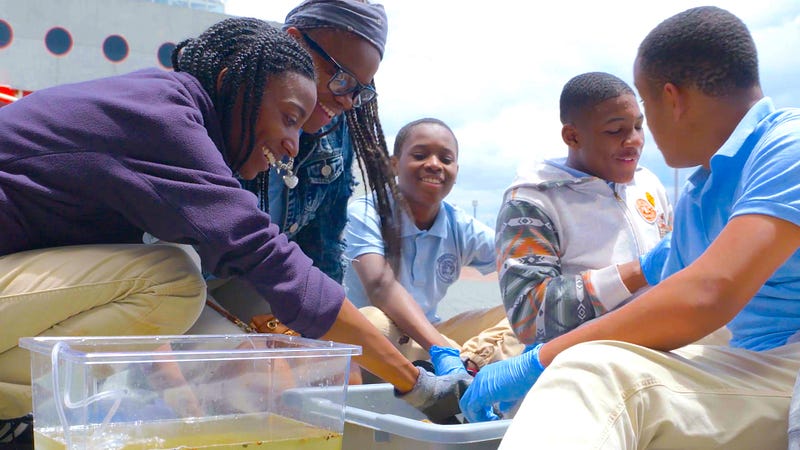
You can find Symone on Twitter and Instagram.
Thank you, Symone, for your passion for the marine and environmental sciences — and for your dedication to seeing that passion realized in others. We’re so honored to have you in our #VanguardSTEM Village!
If you enjoy our weekly #WCWinSTEM features, consider donating to our parent not-for-profit, The SeRCH Foundation, Inc., to help support this work.
